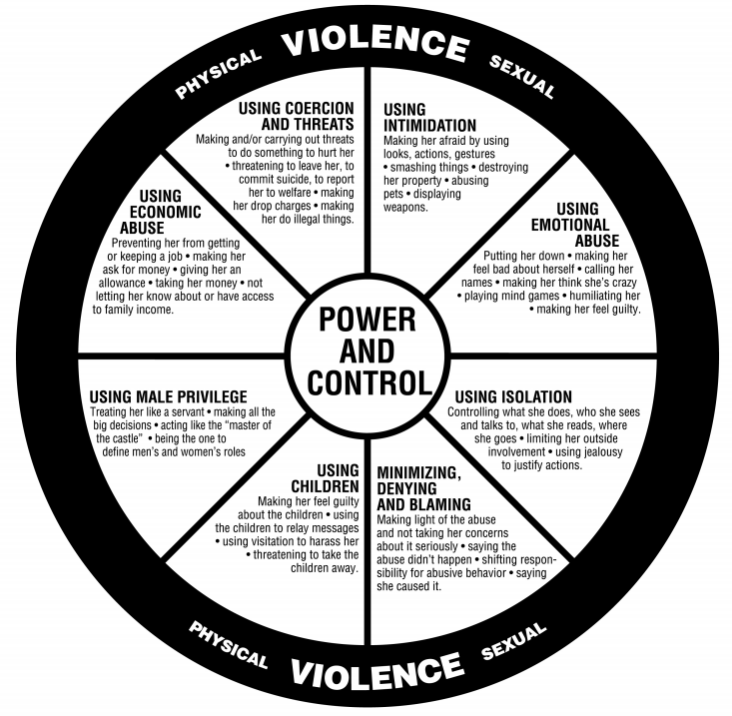THE DARK SIDE OF RELATIONSHIPS
- Root Cyprus
- Jan 9, 2022
- 4 min read
Updated: Jan 15, 2022
Unhealthy relationships have been mistaken for healthy relationships for many different reasons. A possible reason behind this confusion is the lack of clarity around what healthy and unhealthy relationships look like. Societal norms and values have convinced many individuals that certain behaviours in relationships can be foreseen, despite them having severe mental and physical effects. In some societies, it’s thought that partners, especially male partners of females, have the right to exert violence, in any form, solely due to their relationship status. It’s also important to highlight that differences in the definition of violence have led to different views on what should and shouldn’t be reported as domestic abuse. The World Health Organisation (WHO) has defined violence as “The intentional use of physical force or power, threatened or actual, against oneself, another person, or against a group or community, that either results in or has a high likelihood of resulting in injury, death, psychological harm, maldevelopment or deprivation”.
Common misconceptions that make it easier for partners to exert violence and manipulate their partners is the assumption that violence is only physical. Acknowledging the different types of violence and manipulation could help individuals recognise their unhealthy relationships and ask for help/leave these relationships. The different forms of violence are as follows: physical, psychological, economic, verbal, and sexual. It’s important to note that the different forms of violence are not always overtly seen by others. This does not invalidate one’s experiences nor does it insinuate that it should be disregarded. Some examples of violent behaviours are withholding one’s monetary rights, the use of undermining language, manipulation to have sexual intercourse, or using coercion to get something done. These aren’t always clearly seen by the victim as it’s hard to come to terms with the fact that someone they value is being abusive towards them. Some abusive behaviours will be more gradual and covert than others. For example, the abuser may ease in to restricting the victim’s freedom of wearing what they desire or meeting up with friends. These could first start by using manipulative phrases and behaviour that would insinuate that the victim prioritises their friends over their partner, this would eventually lead the victim to distance themselves from their friends and hobbies that don’t include their partner. Behaviours and small comments may not seem too extreme when they first start, however they could be the start of a manipulation cycle.
On this note, commonly used unhealthy strategies to exert power and manipulate partners are “the cycle of abuse” and “the power and control cycle”. The “power and control cycle” is summarised below.

The typical stages of an abuse cycle are as follows: calmness in relationship, tension building, an incident occurs, partners reconcile and a honeymoon like phase start, then the couple returns to the calmness stage. This may seem like a normal cycle as it’s also healthy for couples to bicker once in a while, however this is not the case. The first state of calmness is when the couple is happy and enjoying each other’s company. The next stage is when the abuser begins to create tension with their violent and manipulative behaviour (reminder: violence is not just physical). The victim will start to try reasoning with their partner, calm them, and work on their relationship. In the meantime, the victim is likely to distance themselves from their hobbies or friends and family as they feel pressured to work on their relationship. This is also the period where the abuser is likely to withdraw their affection, yell, threaten, and blame the victim. The next stage is where the incident occurs, and the abusers anger creates the effect of an “explosion”. The abuser may harm their partner in various ways. Some victims seek help and call the police in this stage; however, it is very likely that most victims are too afraid to do this. Finally, the partners eventually reconcile and the abuser “love bombs” their partner, which creates a “honeymoon” phase. The victim is likely to forgive their partner for their abusive behaviour and are convinced that the incident will not repeat. Unfortunately, victims are faced with the harsh reality that this is a vicious cycle, and they will return to the tension building stage. The only way out of this is to break the cycle. Hence, it is important that couples of all ages are informed of abusive behaviours and the different types of violence.
Overall, it’s important to re-emphasize that physical violence is not the only component of unhealthy relationships, abuse and violence comes in different forms and can happen to anyone, regardless of their age, gender, race, or sexual orientation. Every victim has a right to feel safe and supported, they should try to contact authorities or non-governmental organisations that focus on helping victims in such situations. Most importantly, it is never the victims fault and they should never feel like they “deserve” to be in this situation.
References
UN World Health Organization (WHO), World report on violence and health, 2002, ISBN 92 4 154561 5, available at: https://www.refworld.org/docid/54aa8f744.html [accessed 19 November 2021]





Comments